The Silvery-cheeked hornbill (Latin name Bycanistes brevis), is an avian marvel known for its striking presence and charismatic behavior. With an extensive habitat across Eastern Africa, this species has piqued the interest of birdwatchers and scientists alike. In this exploration of the Silvery-cheeked hornbill, I aim to present a comprehensive overview of what makes this bird so remarkable, from its dietary habits to its unique mating displays, and more.
Physical Characteristics of the Silvery Cheeked Hornbill: Decoding the Appearance
Envision a large bird, substantial in size, commanding your complete attention. It’s not just the size that’s impressive; the colors and structures play a concert of natural design. The bird presents a palette that combines a predominance of black with striking touches of white and a dash of vibrant yellow.
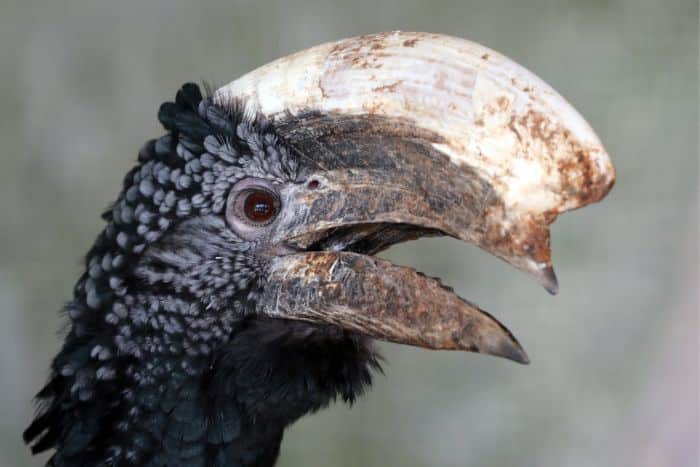
Let’s visualize this bird through a structured approach. Bearing in mind the importance of precision for identification, I’ve compiled its attributes into a clear, easy-to-understand table:
| Attribute | Description |
|---|---|
| Size | Length of approximately 75 to 80 cm (29.5 to 31.5 inches) |
| Weight | About 1 to 1.4 kg (2.2 to 3.1 pounds) |
| Color | Predominantly black plumage with white accents; silvery-white cheeks and throat |
| Beak | Large, curved bill; yellow with a black base |
| Casque | Pronounced, horn-like protrusion on top of the beak |
| Eyes | Bright, piercing with a ring of bare blue skin around them |
| Feet | Strong, zygodactylous (two toes facing forward and two backward) |
The defining trait of the silvery-cheeked hornbill isn’t just a random quirk of nature—its casque, the structure above their beak, is quite peculiar.
The casque’s ornate structure isn’t merely for show; research suggests it plays a role in amplifying the bird’s calls. This adaptation not only aids in their communication across the dense forests they call home but also plays a part in their mating rituals.
I’ll now bring you into the world of their melodic calls and unravel the mysteries behind these distinctive sounds.
The Melodic Call of the Silvery Cheeked Hornbill: Understanding Vocalizations
If you ever find yourself within the range of the silvery-cheeked hornbill, your attention may be captured by their distinctive sound. These large birds employ a series of loud, trumpet-like calls that reverberate through their forested homes.
Their vocalizations serve various purposes, ranging from communicating with their flock to courtship and establishing territories. During the breeding season, these calls become ever more important.
Males use them as part of their display to attract females and to fend off rivals. Females, in turn, may respond, making the auditory exchange a courtship duet that strengthens pair bonds.
What’s more intriguing is the hornbill’s ability to modulate these calls based on context and need. These vocal cues are essential in maintaining the flock’s social dynamics — coordinating group movements, signaling alarm or distress, and bonding pairs.
Diet, Habitat, and Geographical Spread
If you’re curious about what fuels the majestic silvery-cheeked hornbill, you’ll find their menu quite natural. They feed primarily on fruits, and they’re vital seed dispersers in their ecosystems. But they’re not fruit-exclusive; they also munch on insects, small mammals, and birds, particularly during their breeding season when they need extra protein, making them omnivores.
Where do Silvery Cheeked Hornbills live?
The habitat preferences of silvery-cheeked hornbills are as unique as their appearance. They favor the canopies of dense forests, finding solace in the trees. These birds are primarily located in the highland forests of East Africa, roosting in areas that are often mist-covered and rich in their fruit of choice.
When it comes to homelands, these hornbills have a distinct preference. They reside in a few countries, including Ethiopia, Kenya, Tanzania, and Mozambique. Their presence serves as a natural barometer of the health of their habitats.
Conservation efforts are crucial, as the silvery-cheeked hornbill relies heavily on undisturbed forest environments.
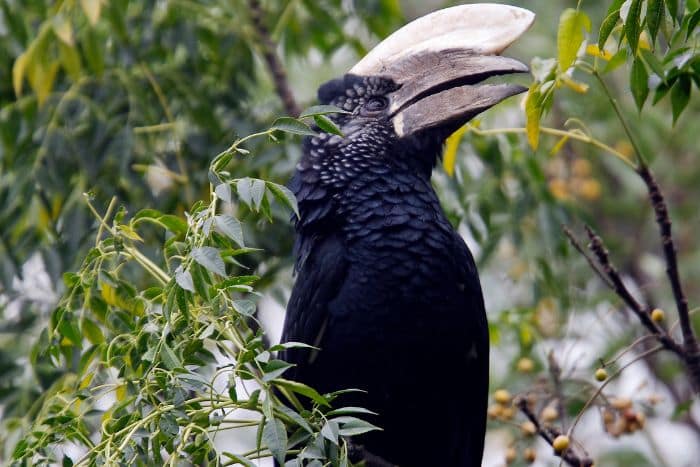
The Silvery Cheeked Hornbill- mating rituals and breeding.
Silvery-cheeked hornbills are like the rom-com stars of the avian world, with their monogamous relationships and intricate courtship rituals that would make even the smoothest operators jealous. Imagine a hornbill strutting its stuff, showing off its best moves – it’s like watching a feathered Fred Astaire wooing Ginger Rogers!
When it’s time to settle down and start a family, these birds take nesting to a whole new level. The female transforms into a DIY queen, sealing herself and her precious eggs inside the nest with a mix of mud, droppings, and whatever else she can find lying around.
She sheds her beak sheath during this time, growing a new one once the chicks are old enough for her to leave the nest and resume feeding duties.
Now, let’s talk about teamwork – or should I say, “wingwork”? Once the nest is sealed tight, it’s up to the male to become the ultimate provider, braving the outside world to fetch food for his lady love and their soon-to-be hatchlings.
And let’s not forget about parenting – it’s a real family affair! Once the chicks arrive, both parents put their heads (and beaks) together to ensure their little ones thrive. From regurgitating food to warding off pesky predators, it’s all hands – or should I say, wings – on deck!
Though they typically live in pairs, silvery-cheeked hornbills can be surprisingly social birds. They sometimes forage in small groups and are known to roost communally in large flocks of up to 200 individuals at night. These roosts can be quite noisy with loud calls and wing flapping.
Conservation status.
The silvery-cheeked hornbill is classified as Least Concern by the IUCN Red List. This means that the overall population is stable and widespread enough to not be considered at risk of extinction. However, there are some threats to their habitat, especially in certain areas of their range.
While the silvery-cheeked hornbill can adapt to some habitat changes, the continued loss of large trees could eventually impact their populations in certain areas.
Want to find the best binoculars for a safari? Check out my blog post here!
Conclusion: The Future of the Silvery-Cheeked Hornbill
The silvery-cheeked hornbill’s future hinges on ongoing conservation efforts and how effectively we protect their natural habitats. Their distinctive behavior and breeding habits are fascinating, not just to the avid birdwatcher but to anyone intrigued by the marvels of nature’s design.
I hope that you found this article on this hornbill interesting and I hope you get lucky to see it one day!
If you have any more questions about this bird or just would like to chat with me, please leave it down below in the comment section or join me on my social media pages for more pictures, videos and stories about my Africa travels!
I wish you happy travels!
Kind regards,
Lizzy
I now have a YouTube channel as well!
YouTube
Hello Africa travellers!
Who am I? Well, the least you can say is that I am quite crazy about Africa, its nature, its climate, its culture, and more.
As a young woman in my twenties, I had already traveled to several African countries by traveling along in an overlander on my own and mostly camping ( or glamping ) and just fell in love with the diversity of it all.
So much, so that at the age of 26, I went back to university to study biology, which, unfortunately, I couldn’t finish because of health reasons (yes, I got sick from a tropical disease, oh cynicism). But this did not stop my dream of traveling back to Africa several times, and I still do.
My dream was back then to leave Europe and go study animal behavior, especially the elephants (sure, that’s every girl’s dream haha), but I am also very much intrigued by hyenas and other “ugly African animals“.
So, I “kind of” have a little bit of a scientific approach to my articles, when I write about African birds, for example. And most of all: the passion.
But life goes on, you move from one side of the country to the other, you get sick again and top it off with lower back problems, and before you know it, you are over 50 hahaha!
Now, I still travel to Africa, but take it a bit “easier” than the good old camping days, and stay in comfortable, yet affordable accommodations, together with my husband Wouter.
These are some of the countries I have traveled to: Kenya, Tanzania, Zanzibar, Malawi, Zambia, Zimbabwe, South Africa, Namibia, Botswana, Tunisia, and a little bit of Lesotho LOL .
While clearly not being African territory, but Spanish, I also visited Gran Canaria and Tenerife, and location-wise, I consider them “African”, because of their climate and nature, sue me :-p
The last trip I took was to South Africa in the year 2023, and it sure got the fevers for Africa back! From the Barberton mountains to the Drakensberg and the Southcoast, one month wasn’t enough at all to see the whole country, so we’ll be back! At ease and with a little bit more luxury than in my younger days haha!
I wish you happy travels!
Kind regards
Lizzy

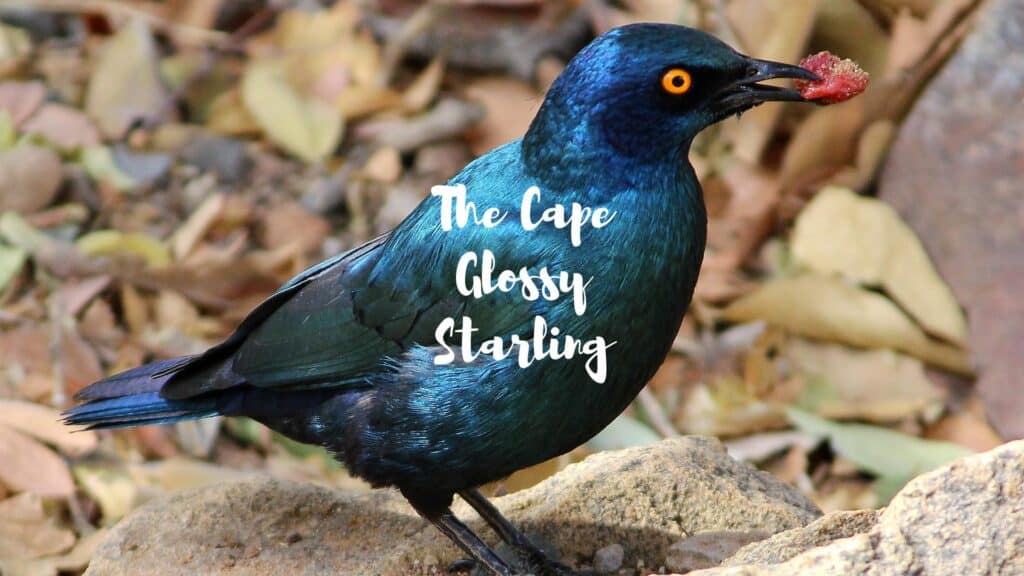
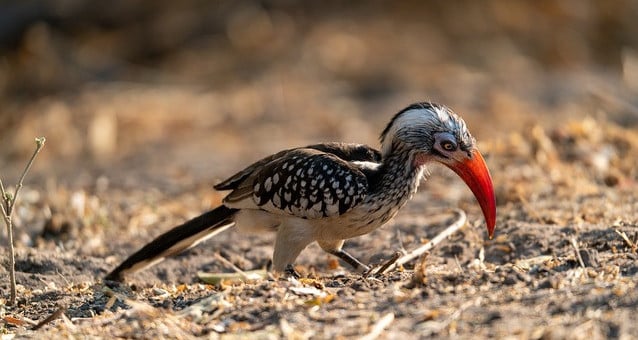






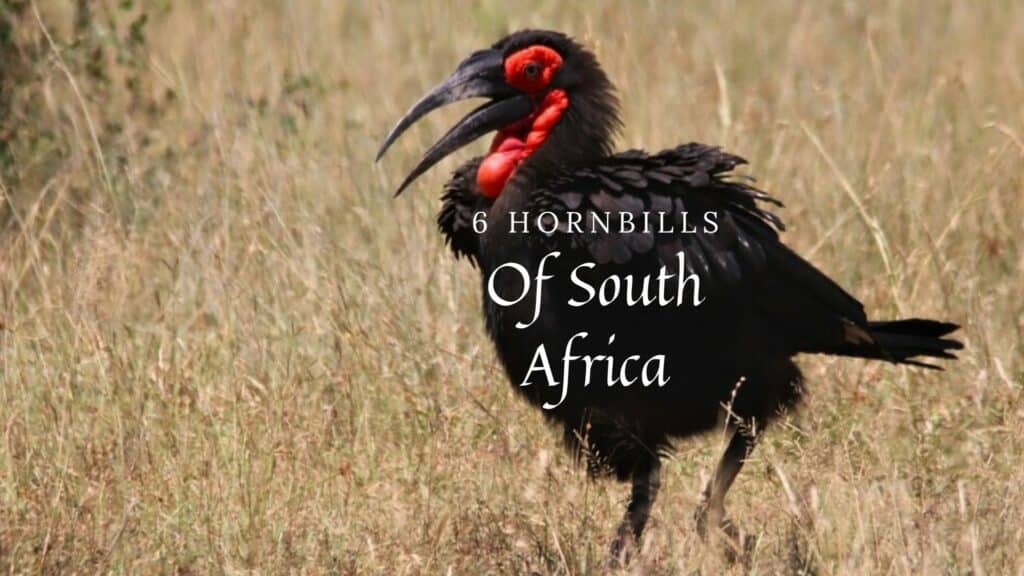

Hi, this is a very strange bird indeed. It’s called a horn bill clearly for a reason I have never seen anything like that. What is the purpose of that giant horn type thing? It looks like it wouldn’t have much for advantages. Anyway it was cool to learn about this. Very cool post. Have a good day.
Hello!
Thanks for the compliments and about your question:
The hornbill’s horn, also known as a casque, serves several purposes:
Amplification of calls: Hornbills use their casques to amplify their calls, allowing them to communicate over long distances. The hollow structure of the casque acts as a resonating chamber, enhancing the sound of their vocalizations.Social signals: The size, shape, and coloration of the casque can vary between species and genders, and it often plays a role in social signaling within the species. It may convey information about the bird’s age, health, and status within the group.Defense and combat: During territorial disputes or competition for mates, hornbills may engage in head-butting contests. The casque can provide protection to the bird’s head during these confrontations.Temperature regulation: Some researchers believe that the casque may play a role in thermoregulation, helping the bird to dissipate excess heat. By increasing the surface area of the head, the casque may aid in cooling the bird’s body temperature, particularly in hot climates.
I hope this answers your question 😉
Have a nice day as well!
Lizzy
Hi Lizzy.
Thank you for introducing me to the Silvery-Cheeked Hornbill! I have never heard of this species before and I love learning and birds so this was a win-win for me. I appreciated that you provided the identification description chart – even though I may never see one in person. I got a chuckle out of the video when listening to their calls.as my dog was wondering what that sound was – lol! You provided a lot of valuable information about this hornbill in the article regarding habitat, diet, behaviors and even concerns. You even answered my question about its casque and how it is beneficial to the species.
I did have a question for you. Do you know if they mate for life or move on after raising their chicks?
Hi there Scott!
You are welcome! It is a funny-looking bird, isn’t it? haha
About your question, I can tell you this:
Many species of hornbills are known for forming strong pair bonds and engaging in long-term monogamous relationships, but not all species mate for life. The degree of monogamy varies among different hornbill species.
In some species, such as the African and Oriental hornbills, pairs typically mate for life and remain together year-round. They engage in cooperative breeding, where both parents contribute to nest-building, incubating eggs, and caring for the offspring.
However, in other species, such as some of the Asian hornbills, pair bonds may not last as long, and individuals may seek new mates in subsequent breeding seasons. The extent of monogamy can also vary within a species depending on factors such as habitat, food availability, and environmental conditions.
Overall, while many hornbill species are known for forming long-term pair bonds, the specific mating behavior can vary between species and populations.
That being said, this specific species, the Silvery Cheeked Hornbill, is indeed monogamous!
I wish you happy birdwatching!
Kind regards,
Lizzy